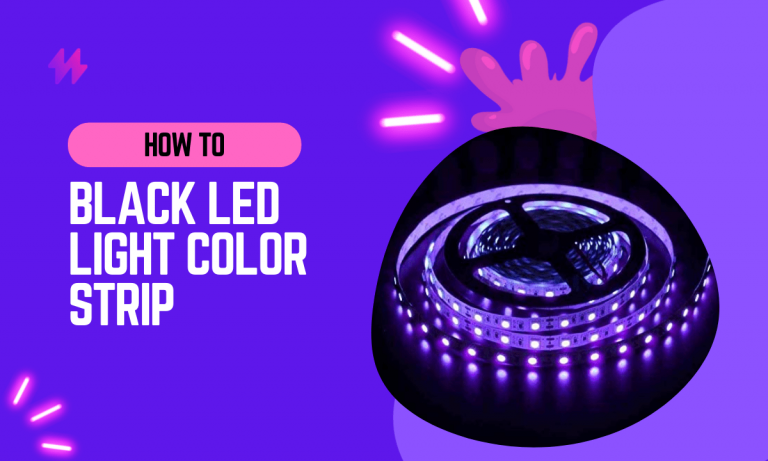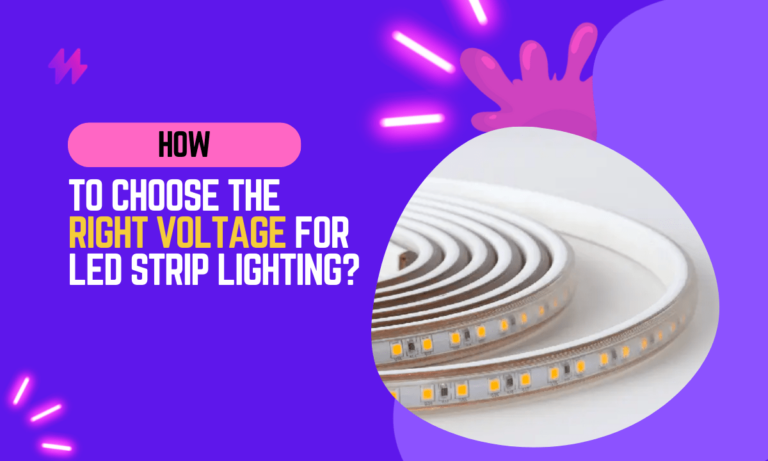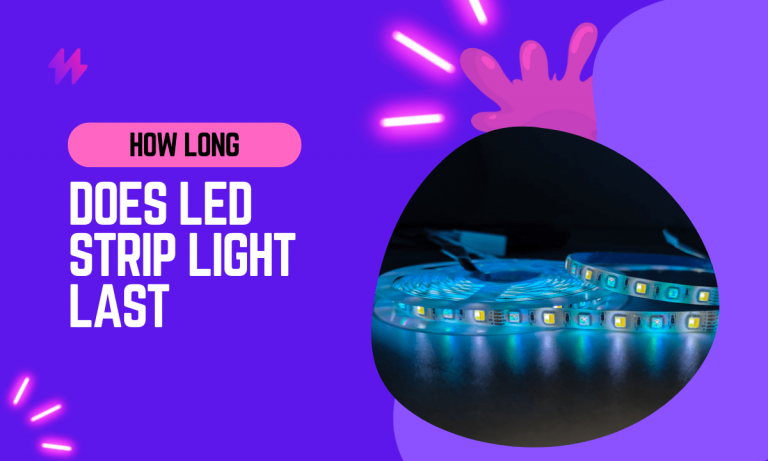Can LED Strip Light Cause Fire?

In recent years, LED strip lights have emerged as one of the most popular lighting choices for both interior and exterior decor. Their versatility, energy efficiency, and dazzling array of colors have made them a favorite among homeowners, businesses, and DIY enthusiasts alike. However, amidst the glow of these vibrant lights, a question lingers in the minds of many: Can LED strip lights cause fires?
LED strip lights are designed to be safe and reliable, but there are certain factors that can increase the risk of fire. Overloading the power supply, using low-quality or damaged LED strips, and improper installation can all contribute to fire hazards. It’s crucial to follow the manufacturer’s guidelines and use high-quality components to minimize these risks.
To ensure the safe usage of LED strip lights, we will provide you with practical tips and best practices. These include properly calculating the power requirements, avoiding overloading the power supply, regularly inspecting and maintaining the LED strips, and installing them in appropriate locations.
By understanding the potential fire hazards and following these safety measures, you can enjoy the beauty and functionality of LED strip lights without compromising on safety.
In this blog post, we will delve into the world of LED strip lights to understand how they work, explore the factors that can lead to fire hazards, and most importantly, provide you with practical tips to ensure the safe and responsible usage of LED strip lights in your home or workplace.
It is essential for users to have a thorough understanding of their lighting products, especially when dealing with LED strip lights. By adhering to guidelines, you can ensure that your LED lighting products function safely, minimizing potential hazards such as overheating or smoke.
Understanding Common Causes of Electrical Fires: Can LED Lights Cause Fire?
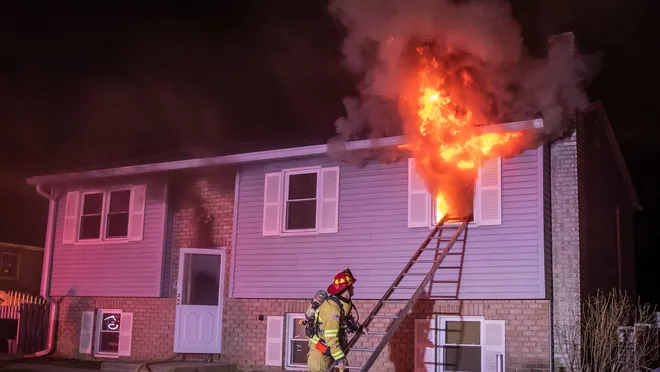
Electrical fires are a serious safety concern, and understanding their common causes is essential for preventing them. These fires can occur suddenly and spread rapidly, posing a significant risk to life and property. Here are some of the common causes of electrical fires:
Understanding the intricacies of various lighting sources is crucial not only for optimal usage but also for fire safety. Implementing the proper standards and practices in maintaining your lighting fixtures can help ensure that even with LED lights, which are generally considered safe, users remain vigilant against potential hazards like overheating, particularly with LED strip indoors.
Overloading Circuits and the Risks of LED Lighting
- One of the primary causes of electrical fires is overloading circuits. This happens when too many electrical devices are connected to a single circuit, drawing more current than it can safely handle.
- Overloading can lead to overheating of wires and electrical components, increasing the risk of a fire.
Understanding the Risks: Poor Quality Materials and Appliances
- The use of substandard electrical materials and low-quality appliances can increase the risk of electrical fires.
- Faulty wiring, cheap extension cords, and counterfeit electrical products may not be designed to meet safety standards, making them more susceptible to overheating and sparking.
Understanding the Risks of Faulty Wiring in Electrical Fires
- Aging or damaged electrical wiring within a building can be a major fire hazard.
- Frayed wires, exposed conductors, or wires that have been chewed by rodents can lead to electrical shorts, sparks, and fires.
Understanding Overheating: A Common Cause of Electrical Fires
- Electrical components such as outlets, switches, and circuit breakers can overheat when they are old, damaged, or worn out.
- Dust and debris accumulation around these components can also contribute to overheating and potential fires.
Understanding Short Circuits in Relation to Electrical Fires:
- Short circuits occur when a live wire comes into direct contact with a neutral wire, bypassing the normal electrical resistance.
- This sudden surge of current generates heat and sparks, which can ignite nearby flammable materials.
Can LED Strip Lights Cause Fire? A Simple Answer to Your Safety Concerns
LED strip lights are generally considered safe and pose a lower fire risk compared to traditional incandescent or halogen lighting. However, like any electrical equipment, LED strip lights can potentially cause fires under certain conditions.
The most common factors that can lead to LED strip light fires include poor installation practices, using non-certified or low-quality products, ignoring manufacturer guidelines, overloading circuits, and environmental factors such as moisture or dust.
To mitigate these risks, it’s crucial to install LED strip lights correctly, follow manufacturer recommendations, avoid overloading circuits, and ensure the use of high-quality, certified LED strip lights and accessories. Regular maintenance and monitoring for signs of trouble can further enhance the safety of LED strip light installations.
Although LED strip lights are relatively safe, it’s important to remember that any electrical item can become a potential hazard if not properly installed or maintained. Ensuring that you use high-quality components and adhere to safety practices can help prevent any risks, as LED lights are unlikely to cause a fire when handled correctly.
Are LED Strip Lights Safe? Understanding if LED Strip Light Can Cause Fire
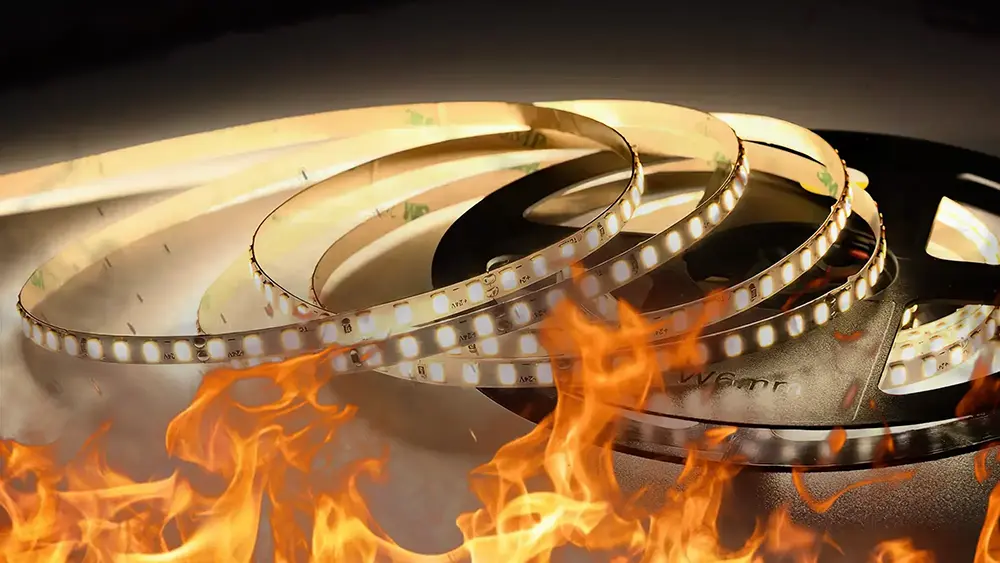
LED strip lights have gained immense popularity for various lighting applications due to their numerous advantages, including energy efficiency, durability, and versatility. When used and installed correctly, LED strip lights are generally considered safe. However, it’s essential to be aware of potential risks and safety precautions. Here’s a closer look at the safety aspects of LED strip lights:
It’s imperative for users to choose the appropriate LED light bulbs or strip lights tailored for their specific lighting needs, ensuring adequate brightness and minimal energy consumption. While the advancements in LED technology have improved safety, users must remain informed about how these light sources operate to prevent issues such as overheating, especially in comparison to traditional incandescent bulbs, which can pose greater risks if mishandled.
- Low Heat Emission: LED strip lights generate significantly less heat compared to traditional incandescent or halogen lights. This reduced heat emission minimizes the risk of overheating and fire hazards.
- Energy Efficiency: LED strip lights are highly energy-efficient, meaning they consume less electricity while providing bright illumination. This efficiency not only saves energy but also reduces the risk of electrical overheating.
- Durability and Longevity: LED strip lights are designed to be long-lasting, with a typical lifespan ranging from 25,000 to 50,000 hours or more. Their robust construction and resistance to shock and vibration make them less prone to damage and safety hazards.
- Low Voltage Operation: Many LED strip lights operate at low voltages, typically 12V or 24V, which reduces the risk of electric shock when handling or installing them.
- Cool to the Touch: LED strip lights remain cool to the touch, even after extended periods of operation. This characteristic makes them safe for use in various settings, including around children and pets.
- No UV Emission: Unlike some other lighting technologies, LED strip lights do not emit ultraviolet (UV) or infrared (IR) radiation, which can be harmful to human health and can damage materials over time.
- Dimmability and Control: Many LED strip lights are dimmable and can be easily controlled, allowing users to adjust brightness levels as needed, further enhancing safety and energy efficiency.
Understanding What Can LED Strip Light Cause Fire: Key Factors to Consider
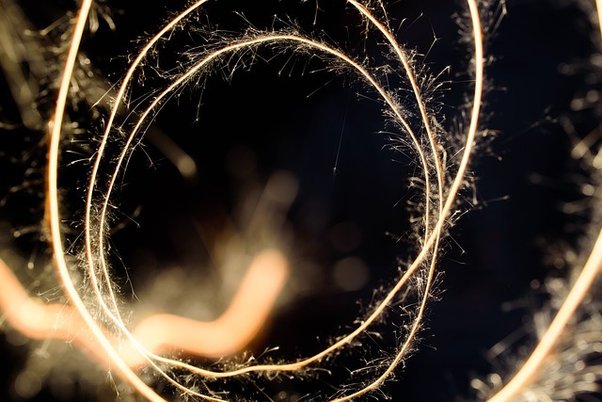
While LED strip lights are known for their safety, there are situations in which they can pose fire hazards. It’s important to understand these factors to ensure safe usage. Here are several factors that can potentially lead to LED strip light fires:
While LED strip lights are known for their safety, there are situations in which they can pose fire hazards. It’s important to understand these factors to ensure safe usage. Here are several factors that can potentially lead to LED strip light fires: Improper wattage settings can significantly increase the risk of overheating, making it essential to choose the right bulbs for your LED light strip. Additionally, ensuring that all connections are secure and free from exposed wires can help mitigate risks and promote must-have fire safety in indoor settings.
- Poor Installation Practices:
- Incorrect installation is a common factor that can lead to LED strip light fires. This includes improper wiring, loose connections, and inadequate mounting.
- Wiring that is exposed, damaged, or not securely connected can overheat and pose a fire risk.
- Using Non-Certified LED strip lights:
- Using low-quality or counterfeit LED strip lights and accessories may increase the risk of fire. These products may not adhere to safety standards and may have subpar components.
- Certified and reputable LED strip lights come with built-in safety features and are less likely to malfunction.
- Ignoring Manufacturer Guidelines:
- Manufacturers provide guidelines and recommendations for the installation, use, and maintenance of LED strip lights. Ignoring these guidelines can lead to safety issues.
- Overloading LED strip lights, exceeding recommended wattages, or using them in ways not intended by the manufacturer can be dangerous.
- Overloading Circuits:
- Connecting too many LED strips to a single power source or circuit can overload it. This excessive current can lead to overheating and potentially cause a fire.
- It’s important to calculate the power requirements of your LED strip lights and ensure they are distributed across circuits safely.
- Environmental Factors:
- LED strip lights are often used in environments where dust, moisture, or other contaminants may be present. These factors can contribute to electrical malfunctions and fires if not properly protected against.
- Using LED strip lights rated for the intended environment can mitigate these risks.
- Aging or Damaged LED Strips:
- Over time, LED strip lights may degrade, and components may wear out. Damaged or aging LED strips can become more prone to overheating and failure.
- Regular inspection and replacement of worn-out strips can prevent potential issues.
- Power Supply Issues:
- Problems with the power supply, such as voltage spikes or inadequate voltage regulation, can impact the safety of LED strip lights.
- Using high-quality power supplies and surge protectors can help mitigate these risks.
Final Thoughts on Electrical Fire Causes and LED Strip Light Safety
In conclusion, while LED strip lights are generally considered safe and are lauded for their energy efficiency and long life span, there is a potential risk of fire if they are not used correctly. This risk primarily stems from improper installation, the use of low-quality or incompatible components, and neglecting to adhere to manufacturer specifications. Overheating can occur if LED strips are covered with insulating materials that trap heat, or if they are packed too densely without adequate ventilation. Additionally, connecting too many strips together beyond the recommended load can lead to overheating and electrical short circuits, which are common fire hazards. It is crucial for safety to choose high-quality LED strips and ensure that all components, such as connectors and power supplies, are compatible and correctly rated for the specific setup.
Moreover, taking proactive measures can significantly mitigate the risk of fire associated with LED strip lights. Regular maintenance checks are essential to identify and resolve issues like loose connections or damaged wires that could lead to electrical failures. It is also advisable to install LED strips away from flammable materials and ensure that there is sufficient space for heat dissipation. For those who are not confident in their ability to safely install LED strip lights, consulting a professional electrician is recommended. By understanding the potential risks and following best practices for installation and use, LED strip lights can be enjoyed safely without undue fear of fire, making them a reliable and efficient lighting option for both residential and commercial spaces.
Can LED Strip Light Cause Fire | Evaluating the Safety of LED Strip Lights
LED strip lights can offer a stylish and energy-efficient alternative to traditional fluorescent lighting and incandescent bulbs, but concerns about safety, particularly regarding fire hazards, must be addressed. The question, “Can LED Strip Light Cause Fire?” arises from factors such as wattage, heat generation, and wiring technique. Unlike old-fashioned incandescent lamps and halogen bulbs that can become excessively hot, LEDs generally operate at lower temperatures, reducing the risk of flames. However, improper installation, such as exposed wires or incorrect power supply, can lead to overheating or even burns. Regular maintenance practices are essential to ensure that dead LEDs do not interrupt circuit integrity and that smart flood lights maintain safe operational standards. Awareness of these elements is crucial for anyone using LED light strips, especially in environments where the potential for lead events, like heat from intentional radiators, could arise. Understanding these factors will help users determine the safety of their LED installations.
Can LED Strip Light Cause Fire | Factors Contributing to LED Strip Light Safety
LED strip lights generally pose a lower fire risk compared to traditional lighting options such as halogen lamps and compact fluorescent lighting. The heat produced by LED technology is minimal compared to other bulbs and power LEDs, which helps reduce the likelihood of fire hazards. Nonetheless, improper installation or the use of inadequate components can negate this safety advantage. Regular checks on dimmable warm LED string lights and ensuring that light switches and wiring are up to standard are essential in maintaining a safe environment.
Monitoring how LED strip lights interact with their power sources is crucial for safety. Overloading circuits or using overly long wiring can lead to overheating, raising concerns about whether LED strip lights can cause fire. Ensuring that all components are compatible, and regularly inspecting the system can prevent issues before they arise. Incorporating must-have fire safety measures, such as using appropriately rated fixtures and protective coverings, also contributes to safer LED strip lighting setups.
Maintenance Practices for LED Strip Lights
Regular maintenance is essential for ensuring the safety and longevity of LED strip lights. Dust and debris can accumulate on the strips, which may trap heat and lead to overheating. This raises the important question: can LED strip light cause fire? Keeping the surfaces clean helps the bulbs work efficiently and reduces the risk of any fire hazards associated with excessive heat buildup.
Inspecting connections and wiring regularly is crucial for preventing potential dangers. Loose or damaged connections can create increased resistance, causing the strips to overheat. These issues should be addressed promptly to avoid being faced with the question, can LED strip light cause fire? Routine checks not only keep the lights functioning properly but also contribute to a safer environment around those fixtures.
Installation Guidelines for LED Strip Lights
Proper installation of LED strip lights is crucial for ensuring safety and performance. Poor wiring techniques can lead to overheating, which raises the question: can LED strip light cause fire? Understanding the factors that contribute to heating is essential, as excess heat can result from inadequate connections or unsuitable power supplies. Careful attention to the materials used and the environment in which the lights are installed plays a significant role in mitigating risks. By following appropriate guidelines, you can minimize potential hazards associated with LED strip lights and enjoy their benefits without concern.
Proper Wiring Techniques for LED Strip Lighting
Proper wiring is essential to ensure the safety of LED strip lights. Poorly connected wires can lead to increased resistance in the circuit. This resistance generates heat, raising concerns about fire hazards. Understanding how to connect LED strips correctly can help mitigate risks. Improper installation raises the question, “Can LED Strip Light Cause Fire?” Heat buildup is a primary factor in such situations.
Using the correct gauge of wiring is crucial for optimal performance. Users should always follow manufacturer recommendations to avoid overheating. The wrong wire size can lead to excessive current flow, contributing to heat issues. Keeping connections clean and secure prevents looseness that could spark fires. Addressing these factors effectively answers the concern: “Can LED Strip Light Cause Fire?” by ensuring a safe installation.
Choosing the Right Power Supply for LED Strip Lights
Selecting the appropriate power supply for LED strip lights is crucial for ensuring safety and optimal performance. An inadequate power supply can lead to overheating, which raises the question: Can LED Strip Light Cause Fire? Ensuring the power supply matches the voltage and current specifications of the LED strips prevents excessive heat buildup during operation. This alignment minimizes risks associated with electrical failures, contributing to a safer environment.
It’s also important to consider the wattage capacity of the power supply. Underpowered supplies can struggle to provide sufficient energy, leading to potential overheating issues. Addressing these concerns is key to avoiding any fire hazards; thus, understanding how much power your LED strip lights require will help you make an informed choice. Remember, careful selection of the power supply can significantly reduce the risk of incidents related to overheating and fire.
Monitoring and Troubleshooting LED Strip Lights
Regular monitoring and troubleshooting of LED strip lights is essential to ensure their safe operation. Signs of overheating may indicate a potential fire hazard, raising the question: Can LED Strip Light Cause Fire? Excessive heat can stem from various issues, such as poor connections or inadequate power supply. Identifying these problems early on can prevent overheating, thus addressing the concern of whether LED strip lights can pose a fire risk. Frequent checks for signs of damage or unusual heat generation are crucial to maintain the safety and longevity of your lighting system.
Signs of Overheating in LED Strip Lights
Overheating in LED strip lights often presents noticeable signs that should not be ignored. If the strips feel excessively warm to the touch or if the light output begins to dim, these can be early indicators that the lights are overheating. It is crucial to address these symptoms quickly to determine whether they may lead to more serious issues. While LED lights are designed to be energy-efficient, heat buildup can still raise concerns, prompting the question: Can LED Strip Light Cause Fire?
Melted or discolored wiring or connectors can also indicate that overheating is occurring. A burning smell or any unusual noises coming from the LED strips are additional red flags to watch for. Being aware of these signs is vital to prevent potential hazards. Remember, signs of overheating should trigger immediate action to ensure safety, as the question remains: Can LED Strip Light Cause Fire?
Detecting Faulty Connections in LED Strip Lighting
Faulty connections in LED strip lighting can lead to overheating, which raises concerns about safety. Loose wires or poor soldering can disrupt the electrical flow, causing the circuit to heat excessively. This situation can lead to potential hazards, prompting the question: Can LED Strip Light Cause Fire? Regularly checking and tightening connections can mitigate these risks and ensure the efficient operation of your lighting system.
Identifying signs of faulty connections early can prevent larger issues down the line. Look for flickering lights or sections of the strip that are significantly darker than others, as these may indicate a poor connection. If overheating occurs, it is essential to investigate the source promptly. Understanding the potential fire risks associated with faulty connections helps maintain safety and longevity in LED strip light usage.


